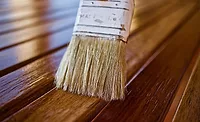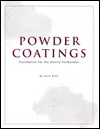New Resin Systems for Bio-Based Farm Equipment Coatings

Credit: Alex Potemkin / E+ via Getty Images
Your sprayers, booms and grain carts are no longer drenched only in diesel residue and salt fertilizer. Enzyme surfactants, fermented inoculants and plant oil adjuvants dominate the tank mix. They are bio-based chemicals that help soil biology yet push any finish designed for yesterday's petrochemistry. To keep the resale value high and downtime low, you need finishes that shrug off acids, esters and live microbes while meeting modern volatile organic compound (VOC) rules.
Market Forces That Make Durability Nonnegotiable
In the United States, farm machinery spending is surging even as margins tighten. Analysts peg the agricultural machinery market at $38.05 billion in 2024 and on pace for a 5.98% compound annual growth rate that would push it to $64.18 billion by 2032.¹ Within that growth, power density keeps climbing—100-plus-horsepower tractors logged a 25.4% year-over-year jump in mid-2023 sales, proving that producers are buying bigger iron built to last longer between trades.²
The construction side of land care is also booming. An IBISWorld report shows the American landscape industry expanding 4.7% over the past five years, fueling demand for skid steers and compact loaders that spend their lives splattered with fertilizer slurry and mulch acids.³ More equipment in circulation means more chances for coatings to fail—or to prove their worth.
Coatings suppliers cannot rely on global stats. U.S. fleets set the performance bar, and they demand finishes that can withstand hard seasons without a mid-cycle repaint.
How New Bio Formulations Attack Legacy Films
Traditional farm and implement paint packages were qualified against diesel fuel, mineral oil and ammonium-nitrate solutions. Bio-actives change every stress factor:
- Linoleic-rich plant oil adjuvants chelate zinc in wash primers and undermine adhesion.
- High-pH coconut surfactants break alkyd chains and open microscopic pores.
- Microbial inoculants acidify under the film and accelerate creep corrosion.
- Urea-formaldehyde fertilizer pods leach plasticizers out of older urethane clears.
A standard alkyd-urethane system that once looked brand-new after three seasons can chalk and blister in half that time when exposed to today's tank chemistry.
Resin Options That Stand Up to Bio-Based Chemicals
Every coating below can handle acids, enzymes and sunlight without adding extra VOCs. Think of them as different tools in the same toolbox—you can use one or layer them for extra protection.
- Castor oil polyurethanes: Plant oil film that flexes and resists chips—spray it on booms and hitch points.⁴
- Linseed-epoxy hybrid: Low-VOC epoxy that blocks plant acids—ideal for hoppers and frames.
- Bio-powder polyester: Solvent-free powder coat with one-third renewable carbon—bake onto cab shells and rims.
- Self-crosslinking alkyd latex: Air-dry, half-bio finish for plastic shields and quick field touch-ups.
Spray a bio-based powder primer for corrosion resistance, then top-coat with castor oil polyurethane so the surfaces flex and shrug off stone chips. The combination blocks rust, resists plant acids and keeps color longer.
Proving a Coating Will Survive
Lab salt spray is yesterday's yardstick. To know whether a finish can handle today's bio-based coatings and chemicals, put it through these checks that mimic real life instead of a controlled cabinet.
-
Electrochemical Impedance Spectroscopy (EIS)
You wire the painted panel to a meter while it sits in a salt solution. The meter measures how well the film blocks electrical current—the same path water and ions use to reach bare metal. Aim for at least five times the resistance you see on your current coating. A 2024 study of lignin-epoxy showed it beat petroleum PU by 5.4×, so the bar is realistic.⁵ -
pH Cycling
Real equipment swings between acidic fertilizer residue and alkaline soap. Recreate that by dunking panels 10 times—first in a pH 4 organic-acid bath, then in a pH 10 coconut-surfactant cleaner. Any blisters or soft spots after those swings mean the finish will fail on the farm. -
Oleic-Acid Patch Test
Plant oil adjuvants are rich in oleic acid. Tape a cotton pad soaked in 5% oleic to the coating for an hour, cover it with foil, then peel it off. If the paint darkens, lifts, or shows a greasy edge, fatty acids will creep under the film in the field. -
Toolbar Field Coupons
Nothing beats dirt time. Bolt small painted coupons behind a planter and log roughly 100 acres of work. After harvest, inspect for chalking, rust rings, or color fade. A coating that looks fresh here is ready for real deployments.
What Wind, Sun and Water Can Teach Farm Paint
Wind turbines spin through salt fog, solar panels roast under UV and hydro turbines grind against silt-laden water. Engineers in those sectors have already switched to bio-based epoxies and polyurethanes to meet the same durability goals you have:⁶
- Solar modules test lignin-stabilized clear coats that hold significant light transmission after thousands of UV hours.
- Offshore wind towers use soy-modified epoxies that eliminate bisphenol-A and cut cradle-to-gate CO₂.
- Hydro turbines run hemp-fiber-reinforced bio-polyurethanes that shrug off cavitation erosion.
Borrow the chemistries proven in these harsher arenas, and your agricultural equipment will have less trouble surviving seasons of seed coatings, inoculants and washdowns.
Inspiration Beyond Metals—Living and Carbon-Negative Materials
Advanced construction shows how protection can live inside the substrate, not just on top. Self-healing concrete carries dormant bacteria for roughly 200 years.⁷ When water enters a crack, the bacteria germinate, convert calcium lactate into limestone and reseal the fissure. Hempcrete walls go further, forming a carbon-negative mass that locks away CO₂ without synthetic pesticides.
These ideas already influence coating labs—microcapsules loaded with acid-neutralizing agents rupture under bio-attack, stalling corrosion like bacteria mend concrete. Expect those “living” top coats to migrate from lab coupons to header tanks within your next purchase cycle.
The Economics of Going Bio
Performance alone won't close the sale. U.S. buyers spend around $681.8 million a year⁸ on agricultural and heavy equipment coatings—a figure forecast to double by 2035 as sustainability mandates tighten. Specifying a finish that qualifies as a USDA-recognized bio-based product opens federal procurement doors and often earns utility-rebate points for VOC reduction. This ROI matters when fleets age past their warranty window.
Seeding a Longer Service Life
Bio-based chemistry is reshaping what splashes on, soaks in and ultimately degrades your equipment. By pairing purpose-built resins—castor PUs, linseed epoxies, renewable-carbon powders — with rigorous testing and insights from wind farms and self-healing concrete, you lock in longer repaint intervals and a smaller carbon footprint. Select a coating that is ready for the biology of modern agriculture, and the only peeling you'll worry about is corn husks at harvest, not paint from your frame.
References
1 United States Agricultural Machinery Market Forecast Report and Company Analysis 2024–2032 Featuring John Deere, CNH, AGCO, KUBOTA, Titan Machinery, CLASS, Lindsay, and Alamo. GlobeNewswire, August 15, 2024. https://www.globenewswire.com/news-release/2024/08/15/2931051/28124/en/United-States-Agricultural-Machinery-Market-Forecast-Report-and-Company-Analysis-2024-2032-Featuring-John-Deere-CNH-AGCO-KUBOTA-Titan-Machinery-CLASS-Lindsay-and-Alamo.html
2 AEM United States Ag Tractor and Combine Report. Association of Equipment Manufacturers, June 2023. https://aem.org/aem/media/docs/statistics/us-month-ag-report-6-2023.pdf
3 Landscaping Equipment Guide. Empire CAT. https://www.empire-cat.com/company/news/landscaping-equipment-guide
4 Lv, W.; et al. Superhydrophobic Polyurethane Foam Based on Castor Oil and Lignin with SiC Nanoparticles for Efficient and Recyclable Oil-Water Separation. J. Water Process Eng. 2024, 66, 103422. https://www.sciencedirect.com/science/article/abs/pii/S2214714424001272
5 Ramezanpour, J.; et al. Progress in Bio-Based Anti-Corrosion Coatings; A Concise Overview of the Advancements, Constraints, and Advantages. Prog. Org. Coat. 2024, 193, 107152. https://www.sciencedirect.com/science/article/abs/pii/S0300944024003485
6 Bio-Based Coatings. Sustainability Directory, April 4, 2025. https://energy.sustainability-directory.com/term/bio-based-coatings/
7 Morrison, R. Innovative Construction Methods That Benefit the Environment. Renovated, February 10, 2025. https://renovated.com/innovative-construction-techniques-that-benefit-the-environment/
8 Singh, S. US Agricultural Coatings Market Research Report By Type (Seed Coatings, Fertilizer Coatings, Pesticide Coatings, Herbicide Coatings), By Application (Crop Protection, Seed Protection, Soil Enhancement), By Formulation (Liquid, Powder, Granular) and By End Use (Agriculture, Horticulture, Forestry)—Forecast to 2035. Market Research Future, June 2025. https://www.marketresearchfuture.com/reports/agricultural-coatings-market-12714
Looking for a reprint of this article?
From high-res PDFs to custom plaques, order your copy today!









